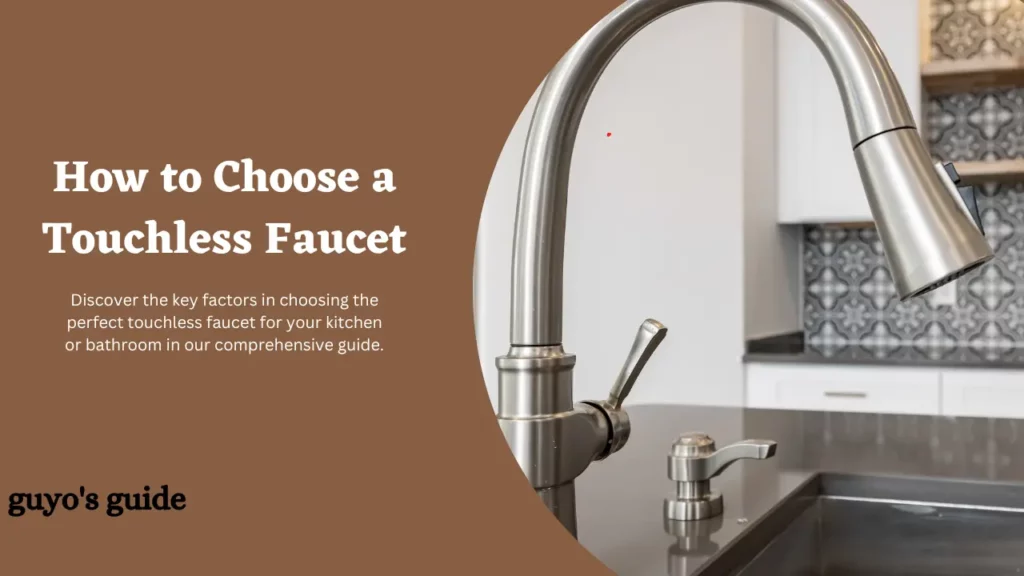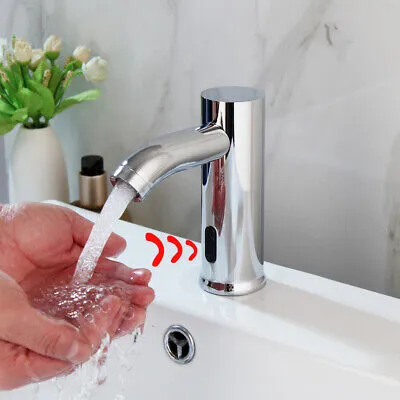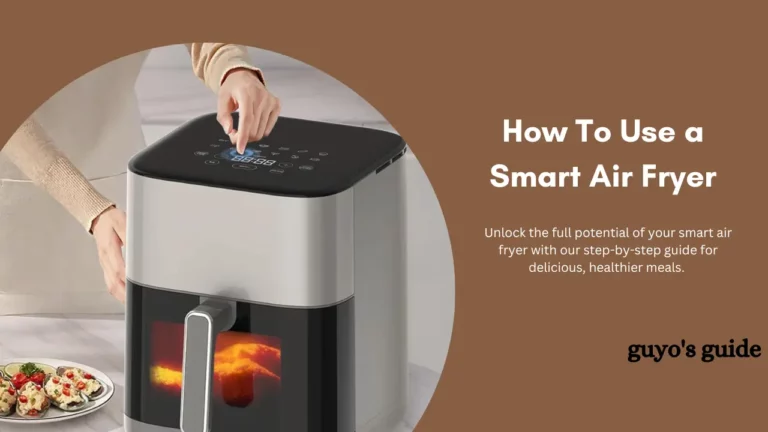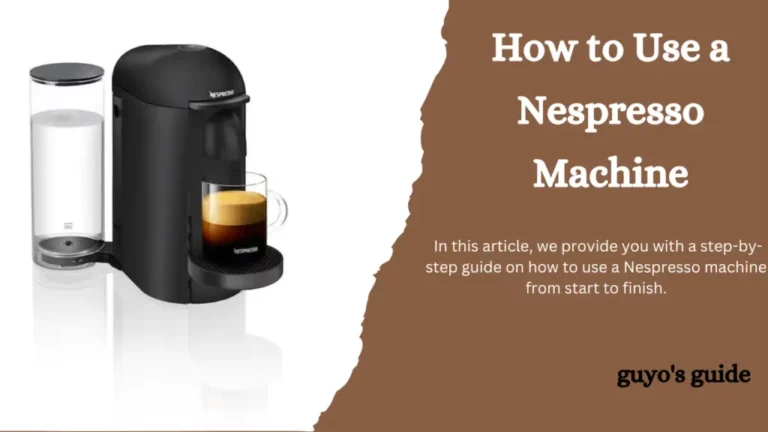How to Choose a Touchless Faucet (18 Factors)


Touchless faucets have become increasingly popular in recent years, revolutionizing the way we interact with our kitchen and bathroom fixtures.
With their convenient and hygienic operation, touchless faucets offer a hands-free experience that minimizes the spread of germs.
However, with the multitude of options available in the market, choosing the right touchless faucet can be a daunting task.
In this article, we’ll guide you through the essential factors to consider when selecting the perfect touchless faucet to enhance your daily life.
Let’s get started.
How to Choose a Touchless Faucet (Factors to Consider)

Choosing the right touchless faucet for your home or business is an important decision, as it can impact both convenience and water efficiency. Here’s a definitive guide to help you make an informed choice:
1. Installation Type
Decide whether you need a deck-mounted or wall-mounted touchless faucet. The choice depends on your existing sink or counter configuration.
2. Power Source
Touchless faucets typically require a power source. They can be battery-operated (e.g., AA or AAA batteries) or hardwired to your electrical system. Consider your preference and the availability of power sources at the installation site.
3. Sensor Type
Infrared sensors are common for touchless faucets. Consider the sensor’s range and sensitivity to ensure it activates reliably without false triggers.
4. Finish and Style
Choose a finish (e.g., chrome, stainless steel, brushed nickel) that matches your kitchen or bathroom decor. Consider the faucet’s style and design to complement the overall aesthetics.
5. Spout Type
Select a spout type that suits your needs, such as a standard gooseneck, pull-down, or commercial-style sprayer. The spout’s height and reach should work well with your sink and washing needs.
6. Water Flow Rate
Check the faucet’s GPM (gallons per minute) rating to ensure it meets your local water conservation regulations and personal preferences for water efficiency.
7. Temperature Control
Some touchless faucets offer a single, pre-set temperature, while others provide both hot and cold water control. Choose the one that best fits your requirements.
8. Activation Method
Determine how the faucet activates. Some models turn on and off with a simple hand wave, while others require you to touch a specific part of the faucet. Consider which method is most convenient for you.
9. Durability and Quality
Look for faucets made from high-quality materials to ensure longevity. Check for features like ceramic disc cartridges, which provide smooth and reliable operation.
10. Maintenance and Cleaning
Opt for a touchless faucet with a finish that is easy to clean and resistant to fingerprints and water spots. Consider ease of maintenance for sensor cleaning and battery replacement.
11. Price and Budget
Set a budget for your touchless faucet purchase. Prices can vary significantly, so balance your needs with your budget to find the best value.
12. Warranty
Review the manufacturer’s warranty to ensure you’re covered in case of defects or malfunctions. A longer warranty period is usually a good sign of product quality.
13. Brand and Reviews
Research different brands and models to see what users are saying about their experiences. Choose a reputable brand with positive customer feedback.
14. Certifications
Look for faucets that are certified for water efficiency and quality standards, such as the WaterSense label for water-saving products.
15. Installation
Consider the ease of installation. Some touchless faucets require professional installation, while others can be installed as a DIY project. Make sure you have the necessary tools and skills for the job.
16. Compatibility
Check whether the touchless faucet is compatible with your existing plumbing setup and sink. Adapters and additional components may be required for a seamless installation.
17. Smart Features (Optional)
Some touchless faucets offer additional features like Wi-Fi connectivity, voice control, and customized settings. Decide if these features are important to you.
18. User Experience
If possible, try out the touchless faucet in a showroom or at a friend’s place to assess its user-friendliness and performance.
19. Future Proofing
Consider whether the faucet is designed for future upgrades or if replacement parts are readily available for maintenance.
Key Benefits of a Touchless Faucet
Touchless faucets, also known as sensor or hands-free faucets, offer several key benefits for both residential and commercial applications. Here are some of the advantages of using a touchless faucet:
1. Hygiene and Germ Control
One of the most significant benefits of touchless faucets is improved hygiene. Users don’t need to touch the faucet handles with dirty hands, reducing the spread of germs and cross-contamination.
2. Water Conservation
Touchless faucets often feature automatic shut-off mechanisms, ensuring that water flows only when needed. This promotes water conservation and helps reduce water wastage.
3. Convenience
Hands-free operation is incredibly convenient. Users can activate the faucet with a simple wave or by placing their hands under the sensor, making it ideal for situations when hands are full or dirty.
4. Energy Efficiency
Touchless faucets are usually equipped with sensors that can detect when they are no longer in use. They automatically turn off the water flow, reducing energy consumption and utility costs.
5. Improved Access
Touchless faucets are beneficial for individuals with limited mobility. They are easy to use, making them accessible to people of all ages and physical abilities.
6. Reduced Maintenance
Touchless faucets often have fewer parts that can wear out or require maintenance compared to traditional faucets with handles and cartridges. This can result in lower long-term maintenance costs.
7. Longevity
Many touchless faucets are built with high-quality materials and durable components, leading to a longer lifespan compared to traditional faucets.
8. Prevention of Cross-Contamination
In healthcare settings and commercial kitchens, touchless faucets can help prevent the transfer of pathogens from contaminated hands to the faucet handles, reducing the risk of foodborne illnesses and infections.
9. Water Temperature Control
Some touchless faucets offer precise temperature control, allowing users to preset and maintain their desired water temperature, which can enhance user comfort and safety.
10. Aesthetics and Design
Touchless faucets come in a variety of styles and finishes, making it easy to match them with the aesthetics of your kitchen or bathroom.
11. Water and Cost Savings
With their automatic shut-off feature, touchless faucets reduce water wastage, resulting in lower water bills and cost savings over time.
12. Smart Features (Optional)
Some touchless faucets can be integrated with smart home systems, allowing for voice control, remote operation, and customized settings, further enhancing convenience.
FAQs
Are touchless faucets suitable for both residential and commercial use?
Yes, touchless faucets are versatile and can be used in both residential and commercial settings. They are commonly found in public restrooms, kitchens, and even in homes.
What types of sensors are commonly used in touchless faucets?
Touchless faucets use infrared sensors, capacitive sensors, or proximity sensors. Infrared sensors are the most common and work by detecting the heat from your body.
Can I install a touchless faucet on my own, or should I hire a professional plumber?
Some touchless faucets come with easy installation instructions and can be installed by homeowners with basic plumbing skills. However, if you’re not comfortable with DIY plumbing, it’s best to hire a professional.
How do I maintain and clean a touchless faucet to ensure its longevity?
Regularly clean the sensor area with a mild cleaner and a soft cloth to prevent mineral buildup. Follow the manufacturer’s maintenance guidelines, and replace batteries or recharge electric faucets as needed.
Are touchless faucets more expensive than traditional faucets, and are they worth the investment?
Touchless faucets tend to be more expensive upfront, but they can save you money in the long run by conserving water and reducing the spread of germs. Whether they’re worth the investment depends on your priorities and budget.
Wrap Up
Selecting the right touchless faucet for your kitchen or bathroom is a decision that balances convenience, hygiene, and style.
By considering factors like sensor type, power source, and installation ease, you can find the perfect fit for your needs.
Remember, while touchless faucets may require a bit more upfront investment, their long-term benefits in water conservation and germ control make them a worthwhile addition to any modern home.
So, go ahead and make the smart choice for a cleaner, more efficient, and stylish water fixture!






